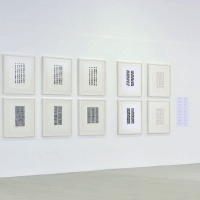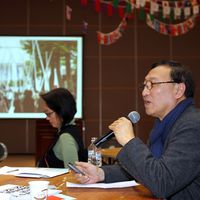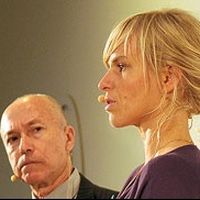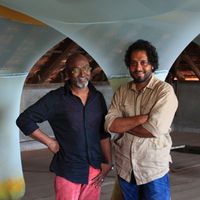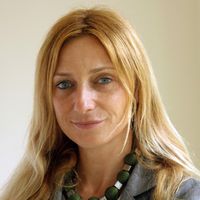Artistic Landmark In Contemporary Experience (ALICE) Award

The culture360.org contributor Veerangana Solanki, interviews the Executive Director of the Global Board of Contemporary Art, Barbara Vanderlinden, to learn more about the Award.
Veeranganakumari Solanki: The Artistic Landmarks In Contemporary Experience (ALICE) is the first contemporary art award of its kind, which unlike any other awards in the art world, considers every possible affiliation with the art community through its eight primary categories and over fifty sub-categories – whether it be a museum, gallery, artist, curator, biennale or publisher. Could you talk about the initiation, development and creation of the ALICE Award?
Barbara Vanderlinden: The ‘global board for contemporary art’ and its award for contemporary art (entitled Artistic Landmarks In Contemporary Experience) were both founded in 2011. Both intended to be tools to facilitate a comprehensive and participatory network approach to the exploration of new ideas and innovative work in contemporary art. The use of ‘global’ in the title of the organisation obviously refers to the global perspective of contemporary art and our contention that we now need a system that deals with the art world as a whole, and not a piecemeal approach that tackles artists locally or restricts manners of expression. The program was conceived to reflect the tremendous evolution of contemporary art. Instead of honoring a particular aspect of contemporary art the ALICE award extends the mission by honoring excellence in different categories and recognising the work of artists, critics, curators, museums, public galleries, private galleries, biennials, and publishers who spread the ideas and forms of contemporary art in global society.
VS: How was the response to the “Artistic Landmark In Contemporary Experience” in its first year? Was it as per your expectations, and did the outreach of the ALICE awards announcements gain immediate acknowledgment and popularity? Could you share the experience?
BV: The ALICE first year was the foundation year for the program. We tested the idea and set it up ready to launch its new stage in 2012 – the second edition of the Artistic Landmarks In Contemporary Art Experience. We invited about 150 members to the Global Board of Contemporary Art to submit projects and created a platform to invite people to freely submit projects.
We received about 1500 propositions and over five thousand participants contributed to the public voting platform. The first year was in fact a beta phase of the project (a phase during which the program was both available for the initial members as well as the general public). In fact, as we are still building crucial web infrastructure many aspect of the project are still in development stages.
However, the idea is gaining momentum as witnessed by the first year’s successful participation of various professional and artists from across the world. Submissions came from over forty countries and over 40,000 people visited the site on a regular basis to follow the process. This all took some time to achieve of course, and was mostly obtained as we spread the word about this program via our newsletter. At this stage we are implementing a series of changes to the programme, which we will be releasing shortly. The main goal is to focus entirely on the membership model as well as to build a system that is free of charge for the members. Public voting will still be available to the general public. By this we want to both open up to the contemporary art community and give a more focused approach to the contributions of professionals. Our main goal now is to make the changes to the website infrastructure which will enable this new approach as well as extend the membership up to many more members from across the world in 2013.
The selection process of the winners will still be based on the idea that all members are involved in the selection and nomination of nominees and winners in each category of the Artistic Landmarks In Contemporary Experience. Associate members are invited to take part in the initial phase of the ALICE evaluation process. Executive members are invited to select the finalists. All members are entitled to propose projects and artists to take part in the programme. They do this by means of submitting projects or nominating colleagues. Thus the system is peer-to-peer and based on the idea of sharing information. We hope to be able to build a logical infrastructure that is able to efficiently route the information to the peer members. In order to better organise this, the future structure will allow members to advertise their expertise to the network. We hope that the knowledge about the expertise of other members will form a semantic topology. Based on this a member will be able to select appropriate members to communicate their projects, instead of having to randomly investigate all the proposed projects and practitioners. We will develop the infrastructure in such a way that the members share descriptions of projects and colleagues’ work among each other. We hope that this form of expertise-based selection will improve the quality of the process with respect to precision, and the number of projects that members have to evaluate.
VS: The Artistic Landmark In Contemporary Experience are presented and juried by the Global Board of Contemporary Art. Being such a large board and jury, there could often be a conflict of interest, and a consensus amongst so many applications might not be easily achieved. Could you describe the affiliation of the GBCA with the Artistic Landmark in Contemporary Experience programme along with a brief description of their short-listing and selection process of the winners?
BV: When establishing a new context for evaluating contemporary art, we conceived of a unique peer-to-peer process, whereby art practitioners and professionals from around the world collaborate to evaluate the development of contemporary art. The entire world is now the relevant unit for questioning the relevance and meaning of contemporary art, not the city, state or nation. For this reason, a network of members drawn from across the world is an important part of the programme. This wider view and input provided by a network of international members is not just good politics; it is good practice for understanding trends, concept and ideas essential to contemporary art in the twenty first century. The meaning of contemporary art in a global context in our view is the diagnosis of the unfamiliar – the illogicality of well-defined national styles and schools all trying to give different “directions” to contemporary art is made clear through the metaphor of the “global board” which refers to a “board of directors” – a body of elected or appointed members who jointly oversee the direction of a company or organisation – in this case the development of the world of contemporary art.
The logic for the use of the word “board” in the title of a “network” organisation is even more instructive. It says a lot about our approach to contemporary art problem-solving. Obviously intended as a very serious tool, we have chosen to call our vision of a global network a “board” because we want it to be seen as something that indicates management at the highest level but which is still accessible to everyone, especially in the wider world, not just the elite few in the power centres and structures of say New York and London, who think they are running the show. In this sense, the Global Board is our most profoundly subversive vision. We want a tool that is accessible to everyone, everywhere across the globe, whose findings, decisions and selections will be disseminated via a free press and which will through a groundswell of public voting and acceptance of solutions to contemporary art's problems, ultimately force contemporary art to move in the direction of an open world view in which artists, curators and critics share values and an imagination that contributes to the articulation of a more profound concept of contemporary art and its relation to the world we share. This may be a view of the process of contemporary art that some think naive, however this is the art world that we would like to propose – a view that hopefully might seem logical to a generation growing up with personal computers and the Internet.
VS: In what way are the winners, honourees and nominees awarded and promoted by the Global Board of Contemporary Art and its affiliated ALICE organisation?
BV: Winners and nominees are honoured online at global-board.org and its affiliated social pages. It is our intention to extend this information in the future by providing a video platform to the nominees and winners broadcasted to a global audience on the global-board.org website. The Global Board of Contemporary Art organisation will make the recordings of the winners’ talks available online as podcasts, and streams videos free at global-board.org website to reach a global audience.
VS: How do you envision the growth and future of the Artistic Landmarks In Contemporary Experience and its affiliate Global Board?
BV: We envision that ALICE will contribute to subvert out of existence the ‘good old boy’ power process by a process that brings Thomas Jefferson into the twenty-first century’s contemporary art world. That is of course a very ambitious statement. In order to have this kind of power, the Global Board will need to have that kind of information and tools for manipulating this information. To realise this vision we will need to develop a comprehensive database that provides the members and participants on the Global Board and its annual awards with better data than its institutionally and nationally organised counterparts. It is our hope to build in the future an inventory of the contemporary art world's vital statistics, and an information source that will help to monitor the current state of the contemporary art world bringing vital news and ideas into the “board-room” live. As the way we communicate and research in the contemporary art world is changing we hope to communicate these new ideas via personal computers, the Internet and new forms of accessing realms of data related to contemporary art.
The Global Board that we envision is to be a place where individuals or teams of people come and co-operate, in order to bring new ideas and the way these work in contemporary art, for 100% of the art world, through spontaneous propositions, co-operation and deliberation among wider networks of expertise without disadvantaging certain parts of the world.
Barbara Vanderlinden has devoted her career to curating and publishing contemporary art projects. At theGlobal Board of Contemporary Art Barbara is Executive Director. Prior to the Global Board of Contemporary Art, Barbara was artistic director at the Brussels Biennial and editor-in-chief of a seminal anthology of essays on the theories of exhibitions titled The Manifesta Decade: Debates on Contemporary Art Exhibitions and Biennials in Post-Wall Europe (MIT Press: 2006). She has curated more than 30 international exhibitions, including among others Manifesta 2 (1998), Taipei Biennial 2004, and Brussels Biennial 1. Her exhibitions have been shown at the Centro Cultural de Belem in Lisbon, the Museum of Contemporary Art and the Museum of Fine Arts in Antwerp, the Center for Fine Arts in Brussels, the Museum of Fine Arts in Taipei, and PS1, Center for Contemporary Art in New York. A prolific writer and publisher, Barbara has published more than fifteen books and has written for numerous international art publications like De Witte Raaf, DAMagazine, Metropolis M, Artforum, and Flash Art.
Veeranganakumari Solanki based in Mumbai, India; is an independent curator and art-writer. She studied English Literature (B.A) and holds post-graduate diplomas in Indian Aesthetics (2007) and Art Criticism and Theory (2009) as well as a Masters in History (2009) and was a participant of the first Gwangju Biennale Curators’ course (2009). Her curatorial experience has involved research on Emerging Asian and international artists and art practices, as well as Indian Modern and Contemporary Art. She is on the curatorial committee of TRIAD (Towards Regional Integration of Artistic Development), a non-profit organisation in London, which aims to create a platform for the development of contemporary art. She was the recipient of the first IllySustainArt Curator’s prize (2011) and the 1st Annual ALICE (Artistic Landmark in Contemporary Experience) Public’s Voice Award 2012 for best Emerging Curator.
Similar content
deadline
16 Dec 2012
posted on
10 Jun 2012

